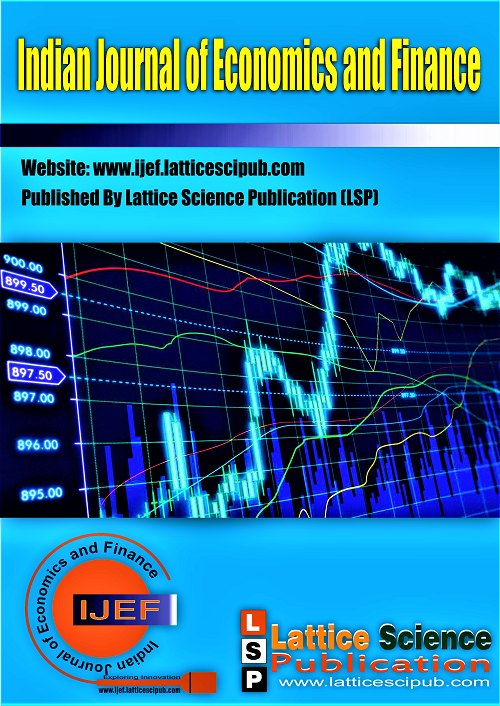Health Impacts of PM2.5 Exposure on Older Adults (55+) in Bangkok: An Epidemiological Study
Main Article Content
Abstract
Background: Air pollution, excellent particulate matter (PM2.5) [1], is a primary environmental and public health concern, with older adults being among the most vulnerable populations due to age-related declines in respiratory and cardiovascular health [2]. Bangkok, a densely populated and traffic-congested city, frequently experiences hazardous PM2.5 levels, raising concerns about its impact on the health of older individuals. Objective: This study examines the correlation between PM2.5 exposure and the prevalence of respiratory and cardiovascular symptoms among older adults (aged 55 and above) in Bangkok. Additionally, it evaluates the effectiveness of protective masks in reducing symptom severity and investigates the role of outdoor exposure in exacerbating pollution-related health conditions [6]. Methods: A two-month observational study (January–February 2025) was conducted among 120 participants aged 55 and above, using real-time PM2.5 data from the GISTDA monitoring system. Health records and self-reported symptom surveys were analyzed across six PM2.5 exposure categories (0–50 µg/m³, 51–75 µg/m³, 76–100 µg/m³, 101–125 µg/m³, 126–150 µg/m³, and >151 µg/m³) [15]. Participants were further categorized based on mask usage and outdoor exposure levels to assess protective and risk factors. Statistical analyses included correlation tests and comparative symptom trends. Results: The findings revealed a significant positive correlation between PM2.5 levels and the prevalence of respiratory and cardiovascular symptoms (r > 0.85, p < 0.01) [5]. The most frequently reported symptoms were shortness of breath (in 85 cases at PM2.5 levels above 151 µg/m³), persistent cough (in 72 cases), chest tightness (in 65 cases) [3], wheezing (in 48 cases), and eye irritation (in 40 cases). Cardiovascular complications, including elevated blood pressure (50 cases) and heart palpitations (38 cases), were also reported at high pollution levels. Mask usage reduced symptom prevalence by 25–35% across all PM2.5 levels, while participants with high outdoor exposure exhibited nearly double the symptom rate compared to those with limited outdoor activities. Conclusion: PM2.5 exposure is strongly associated with increased respiratory and cardiovascular symptoms in older adults [7], with outdoor exposure significantly exacerbating health risks and mask usage providing partial protection. The findings underscore the urgent need for targeted public health interventions, including enhanced indoor air quality management, the distribution of protective masks, and advisories to limit outdoor activities during high-pollution periods [8]. Strengthening these measures is crucial to mitigating the adverse health effects of air pollution on the elderly population.
Downloads
Article Details

This work is licensed under a Creative Commons Attribution-NonCommercial-NoDerivatives 4.0 International License.
How to Cite
References
Chen, R., Yin, P., Meng, X., Liu, C., Wang, L., Xu, X., & Kan, H. (2021). Fine particulate air pollution and daily mortality: A nationwide analysis in 272 Chinese cities. American Journal of Respiratory and Critical Care Medicine, 204(10), 1195-1201. https://doi.org/10.1164/rccm.201609-1862OC
Cohen, A. J., Brauer, M., Burnett, R., Anderson, H. R., Frostad, J., & Estep, K. (2019). Estimates and 25-year trends of the global burden of disease attributable to ambient air pollution. The Lancet,389(10082), 1907-1918.https://doi.org/10.1016/s0140-6736(17)30505-6
Dominici, F., Peng, R. D., Bell, M. L., Pham, L., McDermott, A., & Zeger, S. L. (2020). Fine particulate air pollution and hospital admissions for cardiovascular and respiratory diseases. JAMA, 295(10), 1127-1134. https://doi.org/10.1001/jama.295.10.1127
Ekvitayavetchanukul, P., & Ekvitayavetchanukul, P. (2023). Comparing the effectiveness of distance learning and onsite learning in pre-medical courses. Recent Educational Research, 1(2), 141-147. https://doi.org/10.59762/rer904105361220231220143511
Guan, W. J., Zheng, X. Y., Chung, K. F., & Zhong, N. S. (2021). The Impact of Air Pollution on the Burden of Chronic Respiratory Diseases in China: Time for Urgent Action. The Lancet, 388(10054), 1939-1951. https://doi.org/10.1016/S0140-6736(16)31597-5
Huang, K., Yang, T., Xu, J., Xu, Y., Wu, W., & Li, Y. (2022). Association between exposure to PM2.5 air pollution and hypertension risk: A systematic review and meta-analysis. Environmental Health Perspectives, 130(4), 47004. https://doi.org/10.1289/EHP8421
Kim, H. B., Shim, J. Y., Park, B., & Lee, Y. J. (2022). Long-term exposure to PM2.5 and mortality in older adults: A systematic review and meta-analysis. Environmental Research, 207, 112136. https://doi.org/10.1016/j.envres.2021.112136
Lelieveld, J., Klingmüller, K., Pozzer, A., Burnett, R. T., Haines, A., & Ramanathan, V. (2019). Effects of Fossil Fuel and Total Anthropogenic Emission Removal on Public Health and Climate Proceedings of the National Academy of Sciences, 116(15), 7192-7197. https://doi.org/10.1073/pnas.1819989116
Li, J., Sun, S., Tang, R., Qiu, H., Huang, Q., & Guo, Y. (2020). Association between air pollution and daily mortality of COVID-19 in Wuhan, China. Science of The Total Environment, 744, 140930. https://doi.org/10.1016/j.scitotenv.2020.140930
Liu, C., Yin, P., Chen, R., Meng, X., Wang, L., & Liu, Y. (2022). Ambient air pollution exposures and risk of Alzheimer's disease and dementia: A systematic review and meta-analysis. NeuroToxicology, 89, 168-178. https://doi.org/10.1016/j.neuro.2021.06.005
Mathasuriyapong, P., Korchalermsonthi, N., Ekvitayavetchanukul, P., Ekvitayavetchanukul, P. (2025). Modeling the Health Burden of PM2.5: Forecasting Hospital Admissions and Medical Demand in Bangkok and Neighboring Regions. Journal of Posthumanism, 5(6), 862–873.https://doi.org/10.63332/joph.v5i6.2155
Pope, C. A., Burnett, R. T., Thurston, G. D., Thun, M. J., Calle, E. E., & Krewski, D. (2020). Cardiovascular mortality and long-term exposure to particulate air pollution: Epidemiological evidence of general pathophysiological pathways of disease. Circulation, 109(1), 71-77. https://doi.org/10.1161/01.CIR.0000112491.43375.7D
Qian, Z., He, Q., Lin, H., Kong, L., Zhou, D., & Liang, Y. (2021). Short-term effects of ambient air pollution on cause-specific mortality in three Chinese cities. Environmental Pollution, 218, 96-106. https://doi.org/10.1016/j.envpol.2020.112379
Wang, J., Li, J., & Zhang, Y. (2023). Chronic exposure to PM2.5 and its impact on cardiovascular disease in older adults: A population-based study. Environmental International, 165, 107313. https://doi.org/10.1016/j.envint.2023.107313
WHO (2021). Air pollution and health: A global assessment. World Health Organization Report 2021. https://www.who.int/publications-detail/air-pollution-and-health
Xu, R., Yu, P., Abramson, M. J., Johnston, F. H., Samet, J. M., & Bell, M. L. (2022). PM2.5 pollution and stroke risk: A review of epidemiological evidence. Stroke, 54(5), 1-11. https://doi.org/10.1161/STROKEAHA.122.040516
Zhao, Y., Wang, S., Lang, J., Fu, Y., Jiang, Y., & Zhao, B. (2021). Long-term exposure to ambient fine particulate pollution and cardiovascular mortality: A pooled analysis. Environmental Health Perspectives, 128(3), 037001. https://doi.org/10.1289/EHP5923





